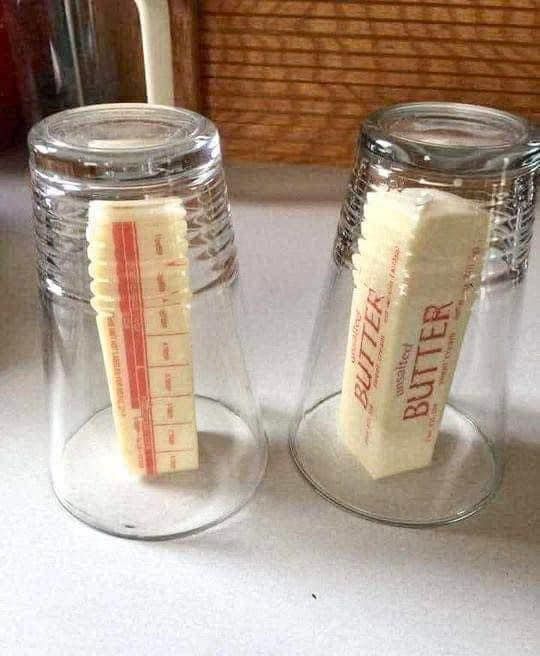ADVERTISEMENT
Bonus Tip: The Right Consistency
The goal is softened butter, not melted butter. You should be able to press your finger into the butter and leave an indentation, but it shouldn’t be greasy or overly runny. If it’s too soft or starting to melt, you’ve gone too far, and it might affect your baking results.
For most recipes, the butter should be at room temperature, which is around 65°F (18°C). This method gives you that same soft consistency in a fraction of the time.
Other Ways to Soften Butter (if You’re Out of Time!):
While the glass method is a favorite for many bakers, there are a few other tricks you can use if you’re in a bind:
Microwave (on low): If you’re really pressed for time, microwave the butter on low in 5-10 second intervals. Keep a close eye on it so it doesn’t melt.
Grate It: If you’re in a hurry and don’t mind a bit of extra effort, use a box grater to grate the butter into small pieces. It will soften faster because the smaller pieces are exposed to air.
Cut It into Small Cubes: If you have a few minutes, cut the butter into small cubes. The increased surface area allows it to soften faster.
Final Thoughts:
This butter-softening hack is one of those little kitchen secrets that can make a big difference in your baking routine. It’s so simple yet super effective! No more waiting for butter to soften on the counter for hours or risking melting it by mistake.
Next time you’re whipping up your favorite treat, try this trick, and you’ll have perfectly soft butter ready to go in minutes—without compromising your recipe.
ADVERTISEMENT
